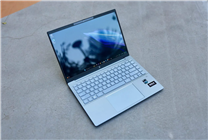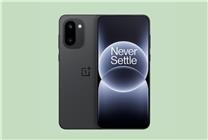The iPhone 17 Launch: Controversy Over Pricey Accessories
Summary:
- The iPhone 17 has officially launched, creating waves in the accessories market.
- A new lanyard accessory priced at 479 yuan has provoked discussions among consumers.
- Apple defends the pricing, citing quality and craftsmanship, but reactions remain mixed.
On September 20, the iPhone 17 hit the market, capturing significant attention not just for the phone itself but also for its accompanying accessories, which are now facing increased demand as early users place their orders.
Among the highlights is a lanyard accessory introduced by Apple, which retails for 479 yuan. This lanyard has attracted considerable public scrutiny, partly due to its price tag—especially since consumers must purchase a separate phone case to use it effectively.
The Pricing Debate
The launch of the 479 yuan lanyard has sparked a heated debate online. While some users applaud its design, many critics question the rationale behind spending nearly 500 yuan for a simple accessory. Commenters have taken to social media to express incredulity, particularly noting that those opting for the official Apple accessory instead of waiting for third-party alternatives may be making a questionable choice.
Frustrated consumers have voiced their discontent, indicating that the cost is excessively high for what they consider a basic item. Apple has since issued a statement explaining the reasoning behind the lanyard’s price, emphasizing the product’s durability and craftsmanship. According to the company, the lanyard features a smooth touch and a comfortable grip, which justifies its premium pricing.
Apple’s Stance
Apple’s customer service remarks suggest that the company is committed to producing high-quality accessories to meet varied consumer preferences, while also aiming to provide a wider range of products in the future. They maintain that the pricing of their new products is influenced by market demand and reflects the quality invested in their design and manufacturing processes.
This response has not quelled all dissent. Critics label the lanyard’s pricing as "excessive," with one user likening it to an attempt to exploit loyal customers. The term "cutting leeks" has been thrown around, signifying the sentiment that Apple is overcharging for what some perceive as merely a fashionable add-on.
The Consumer Response
The conversation surrounding Apple’s new accessory echoes a larger trend in consumer electronics, where premium brands often find themselves criticized for the pricing of additional accessories. Customers grapple with balancing quality and price while wrestling with brand loyalty and the desire for high-quality products.
As the market for smartphone accessories evolves, Apple appears keen to position itself at the forefront, hoping to capitalize on customer loyalty and affinity for their brand. However, the prevailing consumer sentiment indicates that while some are willing to invest in high-end accessories, others remain skeptical about whether these products provide adequate value for money.
Conclusion
The launch of the iPhone 17 and its accompanying accessories has not only spotlighted the device but has also highlighted pressing questions surrounding consumer expectation and company pricing strategy. As Apple navigates these discussions, the effectiveness of their responses will be crucial in maintaining customer trust and maximizing sales in an increasingly competitive landscape.
Ultimately, the question remains: will users continue to invest in Apple’s premium accessories, or will they turn to third-party alternatives that offer greater value? Only time will reveal the answer as the new iPhone ecosystem unfolds.
This article provides an insight into the current consumer attitudes towards Apple’s new accessory pricing, reinforcing the importance of quality, market responsiveness, and brand loyalty in today’s technology market.






